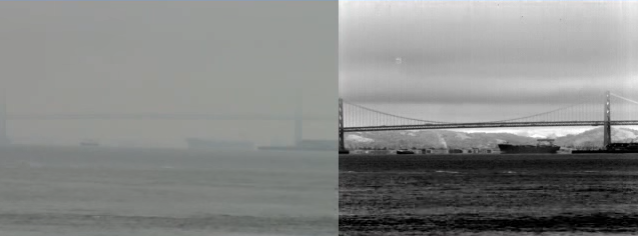Commercial drone technology has increased significantly in recent years. Many of the uses for commercial drones rely on image capture and processing using standard camera technology from companies like GoPro for professional photography, video and filmmaking.
Increasingly though, commercial drones are also being used in conjunction with more advanced imaging camera systems using technologies such as Hyperspectral imaging, short-wave infrared (SWIR) and LiDAR (light detection and ranging). For environmental and damage surveys, SWIR has the distinct advantage of being able to “see through” fog, rain or haze particles and other challenging atmospheric conditions to provide high-contrast views of objects of interest.
The picture below demonstrates a naked-eye view of the San Francisco Bay bridge side-by-side with the matching SWIR image.




